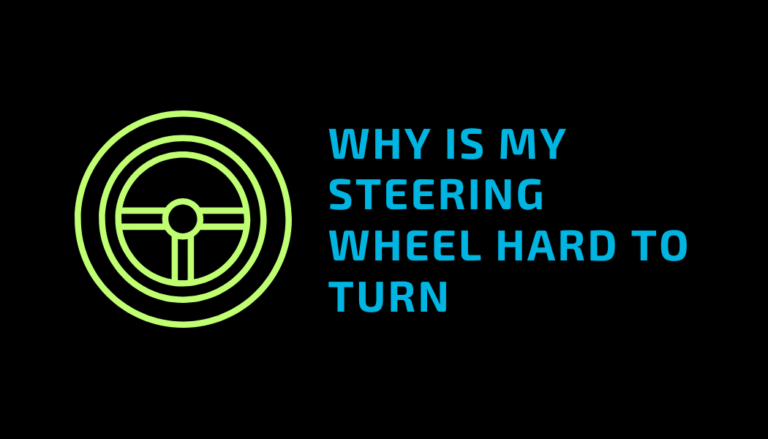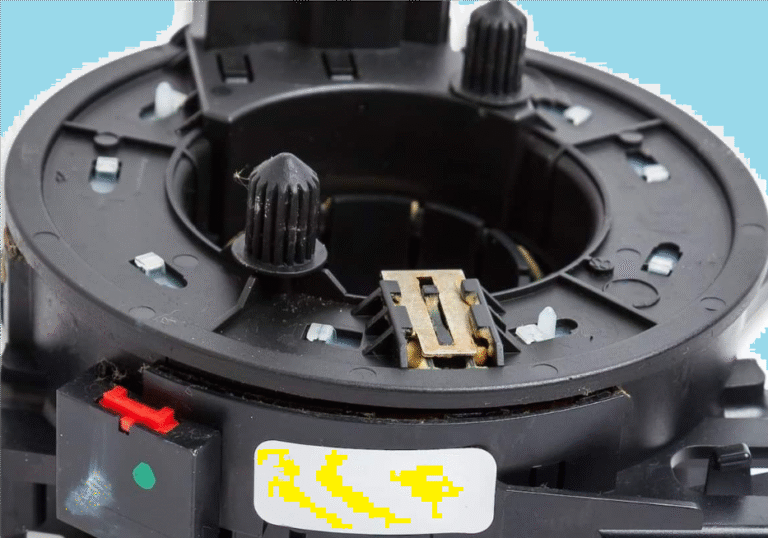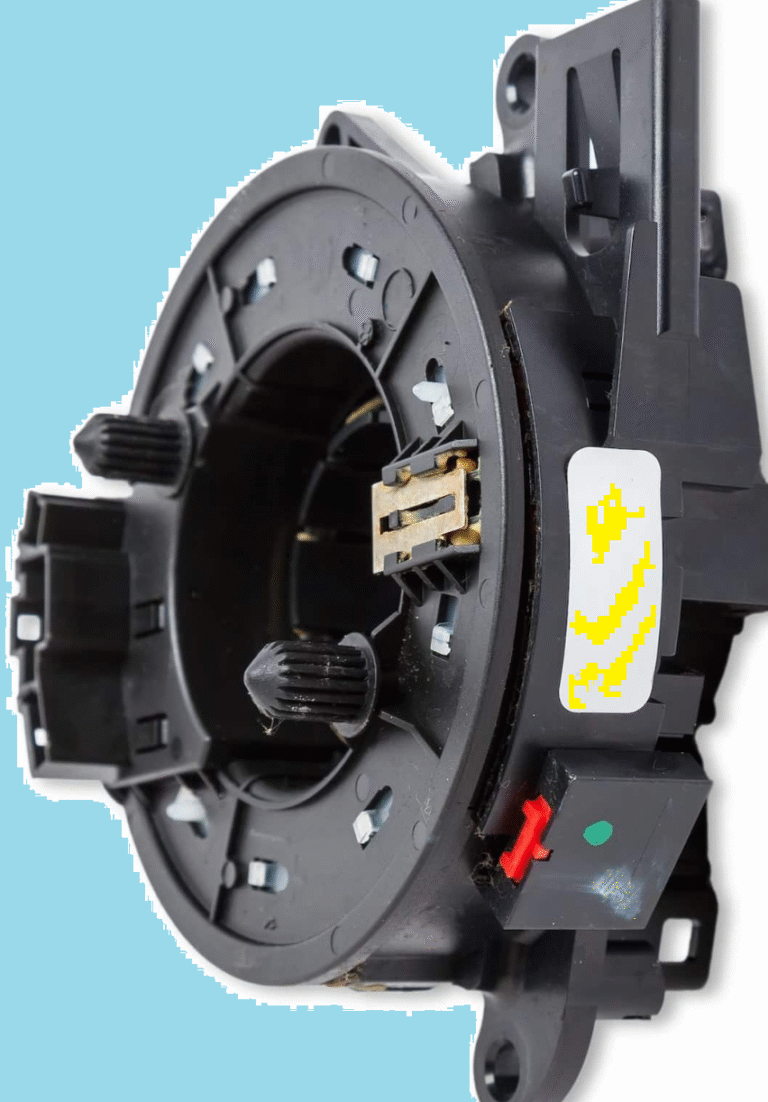If you’ve ever gripped your steering wheel and felt like you’re wrestling with it just to make a turn. I’ve been there, too, and it’s frustrating. Your car is supposed to glide smoothly, not feel like you’re arm-wrestling a bodybuilder. When I first noticed my steering wheel getting stiff, I thought it was just me—maybe I wasn’t strong enough that day!
After digging into the issue, I learned there’s a lot going on under the hood that can cause this problem. I’m going to walk you through the reasons why your steering wheel might feel hard to turn, based on my own experiences and years of tinkering with cars. Whether you’re a daily commuter or a weekend road-tripper, let’s figure out what’s going on and how to fix it.

Image @chassis
Why Does My Steering Wheel Feel Stiff?
A stiff steering wheel can make driving feel like a chore. It’s not just annoying—it can be a safety issue. If you’re struggling to turn, especially at low speeds or in tight spots like parking lots, something’s wrong. I remember trying to parallel park my old sedan in a crowded city lot, and the wheel felt like it was fighting me every inch of the way.
After some trial and error, I realized there are several common culprits behind this issue. Let’s break them down one by one so you can pinpoint what’s happening with your car.
Low Power Steering Fluid
One of the first things I check when my steering wheel feels heavy is the power steering fluid. Most modern cars have power steering systems that rely on this fluid to make turning smooth and easy. It’s like the oil in your engine—it keeps everything moving without too much effort. When the fluid level gets low, your steering can feel stiff or jerky.
I learned this the hard way a few years ago. I was driving my SUV, and the steering started feeling sluggish. I popped the hood and checked the power steering reservoir. Sure enough, it was almost empty! A quick top-up with the right fluid made a huge difference.
Low fluid isn’t always just about needing a refill. Sometimes, there’s a leak in the system. Check under your car for any red or brownish puddles. If you see them, you might have a cracked hose or a worn-out seal.
To check your fluid, find the power steering reservoir under the hood—it’s usually a small plastic container with a cap labeled “power steering.” Use the dipstick or the markings on the side to see if the fluid is at the right level. If it’s low, add the type of fluid recommended in your car’s manual. Don’t mix different types—it can cause more problems.
Power Steering Pump Issues
If your fluid level is fine but the steering is still stiff, the power steering pump might be the issue. This pump pushes the fluid through the system to help you turn the wheel. When it starts to fail, you’ll notice the steering gets harder, especially at low speeds.
You might also hear a whining or groaning noise when you turn the wheel. That’s what happened with my old truck—it sounded like it was complaining every time I made a sharp turn.
A failing pump could be due to wear and tear, especially in older cars. Dirt or debris in the fluid can also clog it up. I once had to replace the pump on my truck because the bearings inside were shot. It wasn’t cheap, but it fixed the problem.
If you suspect the pump, have a mechanic check it out. They can test the pressure to see if it’s working properly. Regular maintenance, like flushing the power steering fluid every couple of years, can help prevent pump issues.
Worn or Damaged Steering Rack
The steering rack is the heart of your steering system. It’s a long metal piece that connects your steering wheel to the front wheels, translating your turns into movement. If it’s damaged or worn out, your steering can feel stiff or unresponsive.
I had this issue with a used car I bought a while back. The previous owner didn’t take great care of it, and the steering rack was shot. Turning the wheel felt like I was trying to move a boulder.
Steering racks can wear out over time due to constant use, especially if you drive on rough roads. Potholes and speed bumps are no friends to your steering system.
A damaged rack might also cause uneven tire wear or a wobbly feeling when you drive. If you suspect this, take your car to a shop. Fixing a steering rack is a big job, and it’s not something you want to tackle in your driveway unless you’re an experienced mechanic.
Faulty Serpentine Belt or Tensioner
Your car’s serpentine belt powers a lot of components, including the power steering pump in many vehicles. If the belt is loose, worn, or broken, the pump won’t work properly, and your steering will feel heavy. I remember hearing a squealing noise from under the hood of my car one summer, and soon after, the steering got stiff. Sure enough, the serpentine belt was slipping because the tensioner was worn out.
Check the belt for cracks, fraying, or a shiny, glazed look. If it’s loose, the tensioner might need adjusting or replacing. This is something you can sometimes fix yourself with basic tools, but if you’re not sure, a mechanic can handle it quickly. Replacing a serpentine belt is usually affordable, and it’s a good idea to inspect it regularly to avoid bigger problems.
Pressure or Wheel Alignment Issues
Sometimes, the problem isn’t in the steering system at all—it’s your tires. Low tire pressure can make steering feel heavy because the tires don’t roll as easily. Misaligned wheels can also cause the car to pull to one side, making the steering wheel harder to turn. I once drove my car for weeks with low tire pressure, thinking it was a steering issue. A quick check with a tire gauge showed I was way below the recommended pressure.
Check your tire pressure with a gauge and compare it to the number listed on the sticker inside your driver’s door or in your car’s manual. Inflate the tires to the right level, and you might notice an immediate improvement. For alignment, look for signs like uneven tire wear or your car drifting to one side. A professional alignment at a shop can fix this and make your steering feel smoother.
Damaged Tie Rods or Ball Joints
Tie rods and ball joints are part of the steering and suspension system. They help transfer the movement from your steering wheel to the wheels. If they’re worn or damaged, your steering can feel stiff or loose. I had a tie rod go bad on my old hatchback, and it made turning a nightmare. The car felt like it was fighting me, and I could hear a clunking noise when I turned.
These parts wear out over time, especially if you drive on rough roads or hit curbs. Check for symptoms like shaking in the steering wheel or unusual noises. If you suspect a problem, get it checked by a mechanic. Driving with bad tie rods or ball joints is dangerous because it can affect your ability to control the car.
Cold Weather Effects
If your steering only feels stiff in the morning or during cold weather, the temperature might be to blame. Cold weather can thicken power steering fluid, making it harder for the pump to work. I noticed this with my car during a freezing winter. The steering was stiff for the first few minutes of driving, but it loosened up as the engine warmed up.
Using the right type of power steering fluid can help. Some fluids are designed to perform better in cold temperatures. Also, let your car warm up for a minute or two before driving in cold weather. If the problem persists even after the car warms up, it’s likely something else on this list.
Comparing Common Causes of Hard Steering
Here’s a quick table to help you understand the main causes and their symptoms:
| Cause | Symptoms | Fix |
|---|---|---|
| Low Power Steering Fluid | Stiff steering, whining noise | Top up fluid, check for leaks |
| Power Steering Pump Issues | Heavy steering, groaning noise | Replace pump, flush fluid |
| Worn Steering Rack | Stiff or unresponsive steering, wobbling | Replace steering rack |
| Faulty Serpentine Belt | Squealing noise, stiff steering | Replace belt or tensioner |
| Low Tire Pressure/Alignment | Heavy steering, pulling to one side | Adjust tire pressure, align wheels |
| Damaged Tie Rods/Ball Joints | Clunking noise, shaky steering | Replace tie rods or ball joints |
| Cold Weather | Stiff steering in cold conditions | Use proper fluid, warm up car |
How to Diagnose the Problem
Figuring out why your steering wheel is hard to turn can feel overwhelming, but you don’t need to be a mechanic to start. Here’s what I do when I notice stiff steering:
- Check the power steering fluid. Pop the hood and look at the reservoir. If it’s low, top it up and check for leaks.
- Listen for noises. Whining or groaning when you turn the wheel often points to the power steering pump or low fluid.
- Inspect your tires. Check the pressure and look for uneven wear. If the car pulls to one side, alignment might be off.
- Feel for vibrations or clunks. These could mean issues with tie rods, ball joints, or the steering rack.
- Test at different speeds. If steering is harder at low speeds, it’s likely a power steering issue. If it’s consistent, check the suspension or alignment.
If you’re not comfortable diagnosing it yourself, take your car to a trusted mechanic. They have tools to test the power steering system and inspect components like the rack or pump.
When to See a Professional
Some fixes, like topping up fluid or inflating tires, are easy enough for most people. But if you suspect a problem with the steering rack, pump, or suspension parts, it’s time to call in a pro. I tried fixing a steering rack myself once, and let’s just say it didn’t end well.
A mechanic has the tools and experience to handle complex repairs safely. Plus, steering issues can affect your car’s safety, so don’t wait too long to get it checked.
Advice for Keeping Your Steering Smooth
To avoid dealing with a stiff steering wheel in the future, here’s some advice based on what’s worked for me:
Check your power steering fluid regularly. Look at it every few months or when you change your oil. Top it up if it’s low, and watch for leaks.
Stick to a maintenance schedule. Flush your power steering fluid every 50,000 miles or as recommended in your car’s manual.
Drive carefully. Avoid potholes and rough roads when you can. They’re tough on your steering and suspension.
Keep your tires in check. Check tire pressure monthly and get an alignment once a year or after hitting a big pothole.
Listen to your car. Strange noises or changes in how your car handles are early warning signs. Don’t ignore them.
By staying on top of these things, you can catch small issues before they turn into big, expensive problems.
Conclusion
A hard-to-turn steering wheel can turn a relaxing drive into a stressful one, but now you know what might be causing it. From low power steering fluid to worn-out parts, there are plenty of reasons your steering might feel off.
I’ve been through this myself, and I know how frustrating it can be to feel like your car’s fighting you. By checking the fluid, inspecting your tires, and listening for odd noises, you can start narrowing down the problem. If it feels too big to handle, don’t hesitate to take your car to a mechanic. Your safety—and your peace of mind—are worth it.
Driving should be smooth and enjoyable, whether you’re cruising down the highway or navigating a busy parking lot. With a little care and attention, you can keep your steering system in top shape and get back to enjoying the ride. So, next time your steering wheel feels like it’s putting up a fight, you’ll know exactly where to start. Happy driving!
FAQs
Why does my steering wheel feel stiff only when I first start the car?
If your steering is stiff only in the morning or in cold weather, the power steering fluid might be too thick when cold. Let your car warm up for a minute or two before driving. Using the right fluid for your car can also help.
Can low tire pressure really make steering harder?
Yes, absolutely. Low tire pressure makes it harder for the tires to roll smoothly, which can feel like stiff steering. Check your tire pressure with a gauge and inflate them to the level recommended in your car’s manual.
How do I know if my power steering pump is failing?
A failing pump often causes a whining or groaning noise when you turn the wheel, especially at low speeds. Steering will also feel heavy. Have a mechanic test the pump’s pressure to confirm.
Is it safe to drive with a hard-to-turn steering wheel?
It depends on how severe the problem is. If steering is slightly stiff, you might be okay for a short drive to a mechanic. But if it’s very hard to turn or you hear strange noises, don’t drive—it could be dangerous.
How often should I check my power steering fluid?
I check mine every few months or when I change my oil. It’s a quick way to catch low fluid or leaks before they cause bigger issues.
Can I fix a steering rack myself?
Fixing a steering rack is a complex job that usually requires special tools and experience. Unless you’re a skilled mechanic, it’s best to leave this to a professional.




